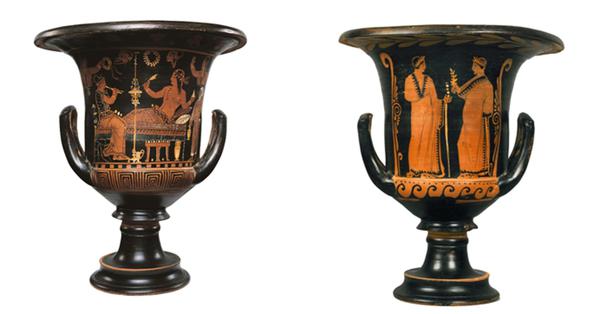Attic Krater of the IV century B.C. returns to Italy

MIBAC announced that soon the Speed Art Museum in Louisville will return to Italy a chalice crater with red figures coming from Paestum.
This type of ceramic replaced the one with black figures and was produced in Athens from 530-525 BC. up to the whole 4th century and its use spread throughout the Mediterranean basin and in particular in the new colonies of the Italian peninsula.
The crater was a very capable container used to hold the wine during the banquets and in which the wine was poured mixed with water and / or honey.
The figures show a subject of the myth of Dionysus often used for this type of container and attributable to the widespread mimicry representation in the Italian Dorian colonies where elements of the Greek myths had merged with the magical instances that the The iconography that is part of one of the 200 identified by the experts, refers to a use of the vessel as funeral equipment in which Dionysius is exalted for his salvific appearance.
Some elements of the decoration suggest that it is the work of Asteas, a Greek ceramist who had his workshop in Paestum and created hydriai and craters for which he preferred mythological and theatrical scenes from which the vases took the name of phliacici.
Asteas was active in the fourth century and its production spread to all the colonies of Megálē Hellàs; his most famous work is the crater with the "Rape of Europe", stolen from Sant'Agata dei Goti and also this one returned to Italy in 2005 after long and complex investigations by department of Carabiners Army that deals with the Protection of Heritage Artistic.
The precious calyx crater depicting Dionysius had arrived on the international antique market, where Speed had acquired it, following a clandestine excavation; when in 2015 Christos Tsirogiannis, an assistant researcher employed in the Culture Treat Project of the University of Glasgow, provided the museum with evidence of illicit origin, Speed has voluntarily proposed restitution.
by M.L. ©ALL RIGHTS RESERVED (Ed 1.0 - 06/02/2018)






